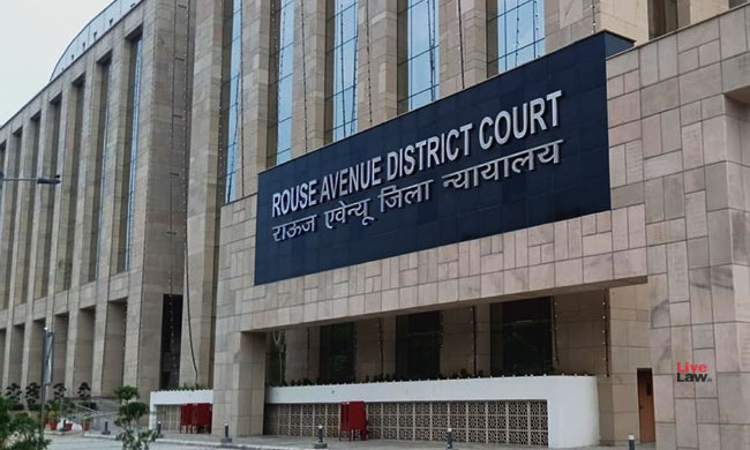The Silent Burden Of Paper: A Plea For Technological Equity In Delhi's District Courts
Anuj Kapoor
8 May 2025 10:15 AM IST

The weight of justice in Delhi's Rouse Avenue District Court often manifests itself quite literally – in the voluminous records of case files. On any given day, navigating records that routinely surpass a few thousand pages is the norm for lawyers practicing here in white-collar crime litigation. It was against this backdrop, during the recording of evidence in a bank fraud matter, that a revealing conversation unfolded between my co-counsel, the learned Judge, and myself.
The learned Judge presiding over the matter, observing my co-counsel's remarkable recall of specific documents, remarked on her grasp of the intricate details despite their sheer volume. It was a moment that underscored a stark reality: the digital divide within our judicial system, a reality particularly palpable in Delhi's district courts.
We, as counsel equipped with our personal devices, demonstrated the power of Optical Character Recognition (OCR) in PDF documents. The ability to instantly find any word within thousands of pages – be it a witness's name, a specific date, or any other expression – by simply using "Ctrl + F" or the search function, is a game-changer. We recounted the pre-digital era, the laborious hours spent manually sifting through documents to establish relevance or trace connections. The contrast was stark: the efficiency of a quick search feature versus the rigour of physically running through endless number of pages.
Our discussion naturally progressed to the technological advancements prevalent in the High Court of Delhi and the Supreme Court. E-filing, digital case management systems, and the ability to access and search records electronically have revolutionized the litigation process at the higher echelons of our judiciary. Yet, this technological wave seems to have largely bypassed Delhi's district courts, leaving judges and public prosecutors grappling with the sheer physicality of justice.
Interestingly, the learned Judge informed us that judicial officers do receive an allowance for the purchase of electronic devices. Moreover, e-filing has now become mandatory even at the district court level in Delhi, and all freshly filed cases, along with accompanying chargesheets, are submitted in soft copy. However, a critical bottleneck remains: the absence of a centralized district court registry system dedicated to maintaining digitized records for each case. This lacuna means that while the digital files exist upon initial filing, there isn't a robust mechanism for their central upkeep and accessibility. Consequently, even though soft copies are available at the outset, the onus of managing and utilizing these digital files falls squarely on individual judges if they wish to move beyond the physical record.
The learned Judge echoed our sentiments, lamenting the lack of adequate technological infrastructure and comprehensive training in digital literacy for the district judiciary and prosecution branch in Delhi. Unlike private practitioners who often come equipped with their own digital tools and proficiency, many within the district court system are still largely reliant on physical files. This disparity creates an uneven playing field, where the very process of accessing and understanding crucial evidence becomes a significant hurdle.
The implications are significant. The cumbersome process of navigating paper-heavy records inevitably contributes to loss of valuable judicial time. Moreover, the inability to efficiently search and analyze vast amounts of data makes the scrutiny more challenging, potentially impacting the quality of justice delivered.
Given that the Delhi High Court exercises administrative control over the district courts in the city, it is imperative that steps are taken to address this technological disparity. Just as the High Court and the Supreme Court have dedicated registries that ensure a digitized record of each case is readily available to the concerned judge at every hearing, a similar infrastructure must be established at the district court level. There should be no significant difference in infrastructural support; the hierarchy within the judicial system should ideally be limited to judicial power and not extend to the tools that enable the efficient administration of justice. It is worth noting that in terms of its physical infrastructure, the Rouse Avenue Court complex, which became operational in 2019, is second to none. It is highly probable that the challenges discussed here, arising from our experience in Delhi's Rouse Avenue Courts, are not unique to the capital and likely mirror the situation prevailing in district courts across various states in the country.
This silent burden of paper in Delhi's district courts, and likely in district courts nationwide, is a weight that technology can easily lift. A strong digital system can lead to better efficiency, saving valuable judicial time, a clearer understanding of case records, and will also be more environmentally friendly. However, setting up digital infrastructure in all courts will be a significant task, needing considerable funds and a clear, ongoing commitment from both the government and the High Courts. A practical way forward might be to introduce this gradually, starting with the CBI courts at Rouse Avenue District Courts. These courts handle the workload of criminal cases under the Prevention of Corruption Act, 1988, and the Prevention of Money Laundering Act, 2002. Another type of Special Court where this could be implemented is the court dealing with cases under the National Investigation Agency (NIA). In these forums, the advantages of digital record-keeping and the ability to easily search documents would be immediately obvious. By developing these as initial projects, we can create a foundation for expanding the system to all district courts in stages, ultimately leading to a more efficient and fairer justice system for everyone.
Views Are Personal.
The author is a Delhi-based Advocate. He can be reached at anujkapoor.law@gmail.com


